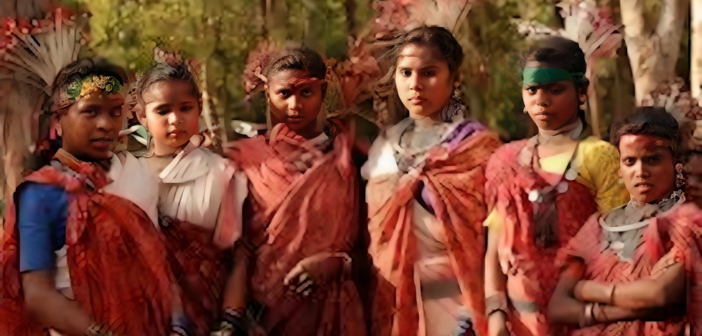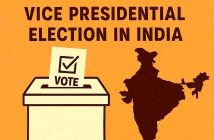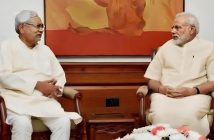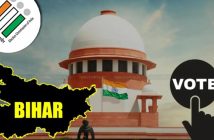Bihar Polls: Parties Eye Tribal Votes
In Bihar’s 2025 assembly elections, parties are racing to win over the often-ignored tribal voters. With promises of jobs, land rights, and better representation, the BJP, RJD, JD(U), and Congress are targeting the tribal vote bank in key constituencies. Historically sidelined, Bihar’s 2.5 million tribals could sway tight races in 15 districts. From rallies to welfare schemes, political giants are rethinking strategies to secure the Bihar elections’ tribal voters. Will this newfound focus empower tribal communities or remain mere poll rhetoric? The tribal vote may shape Bihar’s future.
As Bihar gears up for the 2025 assembly elections, a new battleground has emerged: the tribal vote. Historically overlooked, Bihar’s 2.5 million tribal voters are now in the spotlight. Major parties like the BJP, RJD, JD(U), and Congress are rolling out tailored campaigns to win their support. With tribal communities holding sway in 15 districts, their votes could tip the scales in tight races. The focus on Bihar elections, tribal voters signals a shift in political strategy, but will it address their long-standing issues of land rights, jobs, and representation?
Why Tribal Voters Matter in 2025
Tribal communities in Bihar have often been ignored in mainstream politics. Experts note that Adivasi rights were never a key issue, even in undivided Bihar. Today, with less than 3% of the state’s population, tribals number around 2.5 million. They hold influence in districts like West Champaran, Katihar, Kishanganj, Araria, and Purnea. Their votes can sway outcomes in close contests, making them a crucial Bihar tribal vote bank. Parties now see their potential to shift alliances and secure seats in the Tribal community in Bihar elections.
Historical Neglect of Tribal Communities
Tribal communities in Bihar have long been sidelined. Before Jharkhand’s creation in 2000, tribal issues were overshadowed by broader caste politics. The Jharkhand Mukti Morcha (JMM) once led a movement for tribal rights in undivided Bihar. However, post-bifurcation, Bihar’s tribals lost political clout. Their small population and scattered presence across 15 districts diluted their influence. Issues like land rights, unemployment, and lack of education persist, making the tribal community in Bihar feel forgotten. This neglect has sparked a renewed focus on Bihar elections and tribal voters.
Political Strategies to Woo Tribals
Political parties tribal outreach in Bihar: Major parties are now crafting targeted campaigns for the tribal vote. The BJP is emphasizing development, promising industrial jobs and skill training. JD(U), led by Nitish Kumar, announced the Jananayak Karpuri Thakur Skill University to boost employment. The RJD is focusing on land rights and social justice, appealing to tribal grievances. Congress, through Rahul Gandhi’s rallies, is pushing for caste surveys and welfare schemes. These efforts aim to capture the Bihar tribal vote bank, but some see them as opportunistic moves ahead of the Bihar assembly elections 2025.
BJP’s Development Push
The BJP is banking on its national development narrative. Leaders like Narendra Modi have promised infrastructure projects in tribal areas. The party highlights schemes like PM Awas Yojana for housing. In rallies, BJP leaders pledge to create jobs in industrial zones. They aim to connect with tribal youth, who face high unemployment. However, critics argue these promises lack specificity for the tribal community in Bihar.
JD(U) ‘s Skill Development Focus
Nitish Kumar’s JD(U) is prioritizing job creation. On July 13, 2025, Kumar announced plans to provide jobs to 10 million youths by 2030. The proposed Jananayak Karpuri Thakur Skill University targets tribal youth for skill training. This move aims to address migration and unemployment, key issues for tribals. JD(U) hopes this will strengthen its hold on the Bihar elections among tribal voters.
RJD’s Social Justice Pitch
The RJD, led by Tejashwi Yadav, is focusing on social equity. Yadav’s Jan Vishwas Yatra in 2024 reached tribal areas, promising land reforms. The party is fielding candidates from backward communities to appeal to tribals. RJD’s narrative of fighting for marginalized groups resonates with the tribal community in Bihar, but its past failure to form a government raises doubts.
Congress’s Welfare Promises
Congress is leveraging Rahul Gandhi’s Bharat Jodo Nyay Yatra to connect with tribals. Gandhi’s rallies in Kishanganj and Aurangabad emphasized financial surveys to address tribal poverty. The party promises education and healthcare schemes tailored for tribals. This outreach aims to position Congress as a champion of the Bihar tribal vote bank.
Tribal Demographics and Key Constituencies
Bihar’s tribal population, about 2.5 million, is spread across 15 districts. Key constituencies include West Champaran, Katihar, Kishanganj, Araria, and Purnea. These areas have a mix of Santhal, Oraon, and Munda communities. Tribals face challenges like land disputes, a lack of schools, and limited healthcare. Migration for work is common, with many leaving Bihar for better opportunities. These issues make the tribal community in Bihar a critical focus for parties in the Bihar assembly elections 2025.
Voices from the Ground
Tribal leaders and voters are vocal about their demands. “We want jobs and schools for our children,” says Ramesh Munda, a community leader in Katihar. “Politicians come during elections, but our lands are still disputed.” Anita Oraon, a voter from West Champaran, adds, “We need leaders who understand our struggles, not just promises.” Tribal youth like Sanjay Santhal in Purnea demand skill training to reduce migration. These voices highlight the expectations of Bihar elections tribal voters.
Past Trends in Tribal Voting
In past elections, tribal votes were often split. The JMM’s influence in undivided Bihar consolidated some tribal support, but its impact waned post-2000. In the 2020 assembly polls, the NDA won 125 seats, while the Mahagathbandhan secured 110. Tribal votes played a role in close races but lacked a unified impact. Smaller parties like CPI(ML) gained traction in tribal areas, winning 12 of 19 seats in 2020. This history shows the potential of the Bihar tribal vote bank to influence outcomes.
Challenges to Tribal Representation
Tribals face barriers to political representation. Their small population limits their electoral clout. Scattered across districts, they lack unified leadership. Land disputes and economic marginalization deter political engagement. The Election Commission’s recent voter list revision, requiring specific documents, has raised concerns. Many tribals lack these papers, risking disenfranchisement. Opposition parties, including RJD and Congress, call this a move to suppress tribal votes, a critical issue for the tribal voters in Bihar elections.
New Players in the Race
Emerging parties are also eyeing the tribal vote. Prashant Kishor’s Jan Suraaj Party, launched in 2024, is contesting all 243 seats. Its “school bag” symbol emphasizes education, appealing to tribal youth. Jan Suraaj secured 10% of votes in recent bypolls, showing potential to disrupt established players. Other parties like AIMIM and Azad Samaj Party are also targeting marginalized groups, including tribals, in the Bihar assembly elections 2025.
Implications for Election Outcomes
The tribal vote could be a game-changer in tight races. With 2.5 million voters across 15 districts, tribals can sway results in key constituencies. Parties are aware that unified tribal support could shift alliances. For example, a strong tribal turnout for RJD or Congress could challenge the NDA’s dominance. Conversely, the BJP and JD(U) aim to split the tribal vote to maintain their edge. The focus on Bihar elections, tribal voters, underscores their growing electoral significance.
Controversy Over Voter List Revision
The Election Commission’s Special Intensive Revision of voter rolls, started in June 2025, has sparked controversy. The process excludes standard documents like Aadhaar, affecting tribals who lack alternative IDs. Opposition leaders like Tejashwi Yadav call it a “conspiracy” to disenfranchise marginalized groups. The Supreme Court, responding to petitions, urged the EC to include widely held documents. This issue could impact tribal turnout in the Bihar assembly elections 2025, potentially altering results.
Promises vs. Reality
Tribal voters are wary of unfulfilled promises. Past governments have pledged land rights and jobs, but progress is slow. “We hear big promises every election, but nothing changes,” says tribal elder Jagan Oraon. Parties must bridge this trust gap to win the Bihar tribal vote bank. Genuine efforts to address education, employment, and land issues could sway voters, but empty rhetoric risks alienating them further.
Conclusion
The Bihar assembly elections 2025 mark a turning point for the tribal community in Bihar. Long ignored, their 2.5 million votes are now a key battleground. BJP, JD(U), RJD, and Congress are ramping up outreach with promises of jobs, education, and land rights. Emerging players like Jan Suraaj add to the competition. However, challenges like voter list revisions and historical neglect persist. The tribal vote could reshape alliances and outcomes in tight races. As parties vie for their support, the question remains: will promises translate into real change for Bihar’s tribals?
Stay updated on the Bihar assembly elections 2025 and their impact on tribal communities at our news portal.




